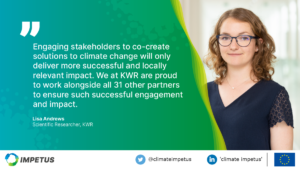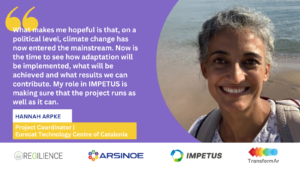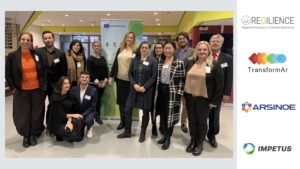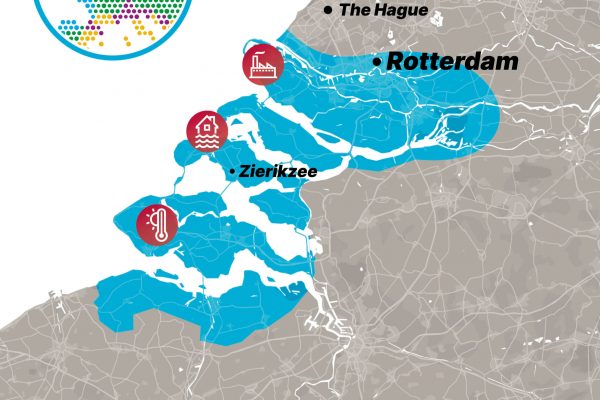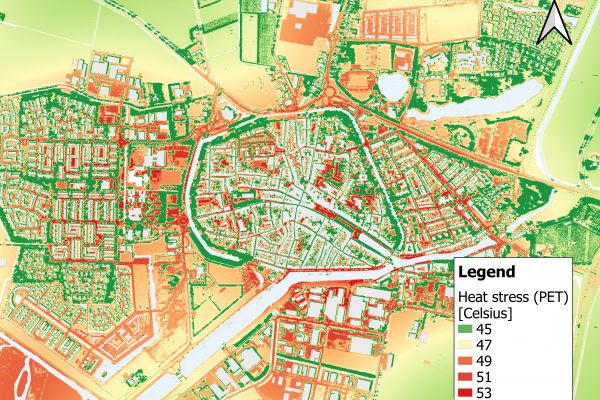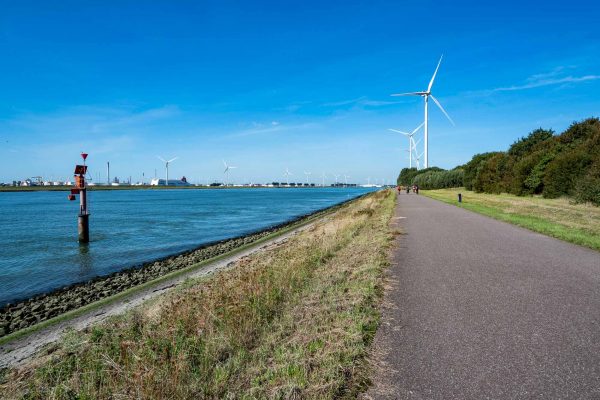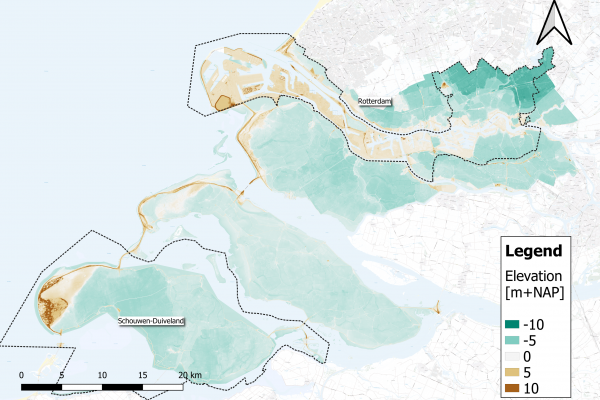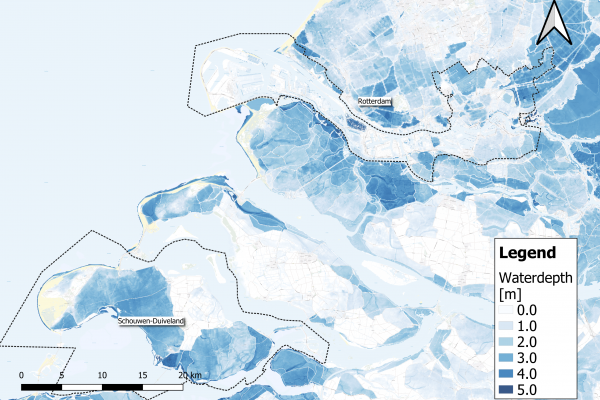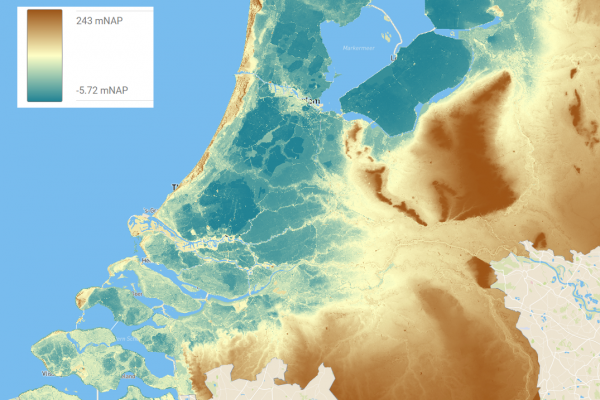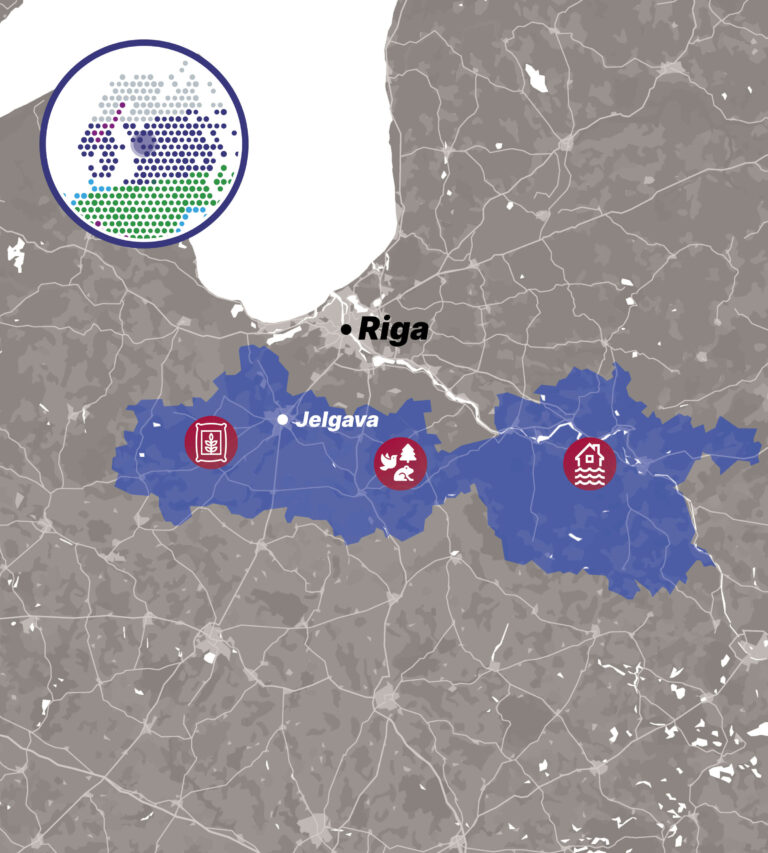
Prognosis
2050
By the middle of this century, increasing agricultural development will intensify pollution and biodiversity loss, while climate change will further increase flooding risks.
Situation
Zemgale region covers almost 17% of Latvia, located in the country’s centre. Ground water provides drinking water resources for cities that occupy around 6% of the area. A dense river network provides ecological corridors for biodiversity and recreational opportunities for people, but intensive agriculture across 40% of the region has impacted biodiversity, water quality and water management.
Climate related issues
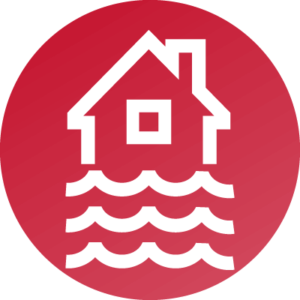
Flooding
High flooding risks mean there is a need to assess Zemgale Plain and update civil protections, which calls for coordination between municipalities and for a system to evaluate risks and allow public institutions and citizens to select effective protection and adaptation measures.
Key actions
We will pave the way for:
- Demonstration site and solutions showcases to contribute to increasing climate adaptation capacity.
- Adoption of climate resilient innovation packages and adaptation pathways for policy and decision making, awareness raising, behavioural change, and development of further adaptation measures.
Contact us

Ingrīda Brēmere
ingrida.bremere[@]bef.lv

Artūrs Penčura
arturs.pencura[@]zpr.gov.lv
Māris Skudra
maris.skudra[@]jelgava.lv
Events
EventON Calendar
News
Resources
Relevant sectors:
Municipality
Citizens
Spatial planning
Agriculture
Forestry
Biodiversity
Our ambitions
We aim to develop a regional system for real-time information exchange and analysis. We will use the new system to support early flood warnings, decision making and civil protection.
Our goal is to create a framework for systemic implementation by involving stakeholders at local and regional level in innovative and multidisciplinary co-creation activities. We aim to incorporate knowledge relating to tourism and forestry as well as agriculture, water and biodiversity.
We will realise an innovative framework for enhancing ecosystem services and integrating nature-based solutions to increase the sustainability of agricultural practices, improve water quality and foster restoration of habitats.
We also aim to scale up from Jelgava city to demonstrate the value of good practices at regional level.
Early warning system:
- Data availability studies
- Building cooperation with national and local authorities
- Improving and extending the early warning system for flood risks
- Providing a web platform on flood risks in the region
- Extending the flood risk early warning system to the region
- Transfer and promotion of the IMPETUS approach
Development of a regional climate change adaptation plan for Zemgale:
- Collecting experience from other countries on climate change impacts
- Prioritisation of climate change impacts in the Zemgale region, elaboration of socio-economic development projections
- Choice of priority pathways and range of adaptation measures
- Elaborated set of measures (solutions) for CC adaptation in Zemgale
- Preparation of a plan, consultation of stakeholders on adaptation measures
- Public consultation (public hearing)
- Approval of the plan by Zemgale development council
- Transfer and promotion of the IMPETUS approach
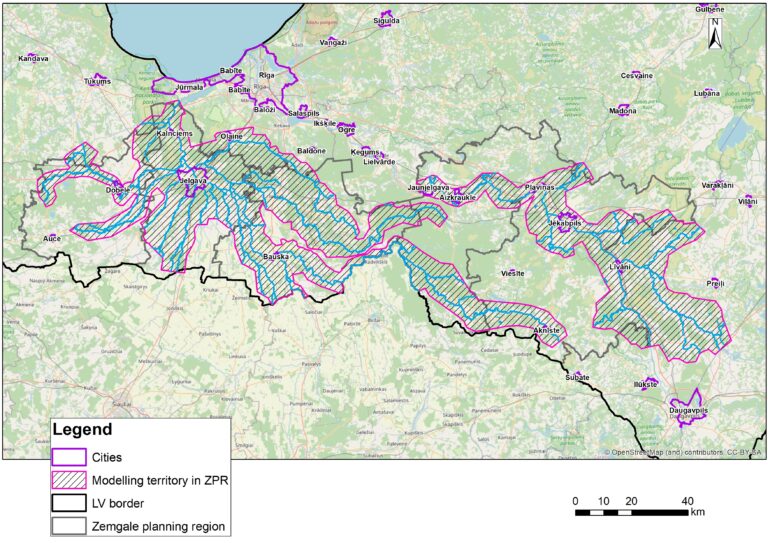
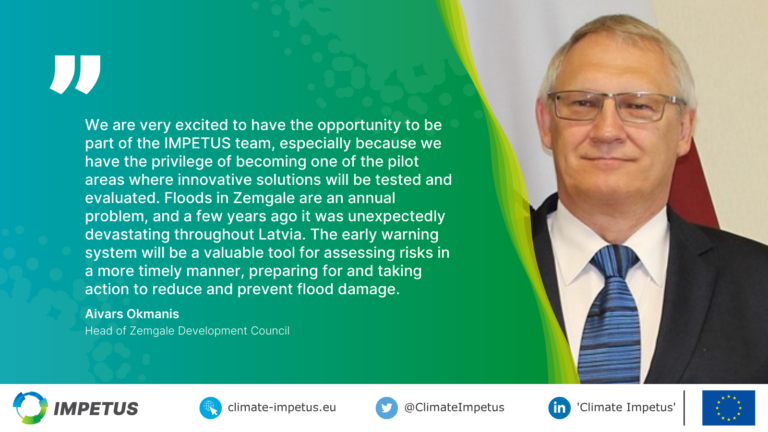
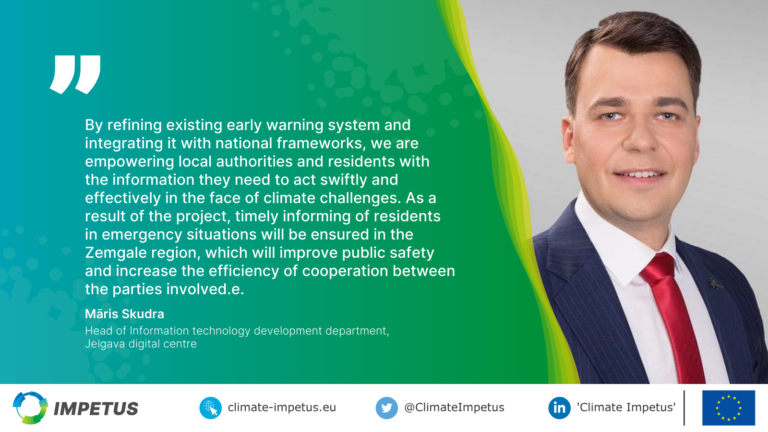
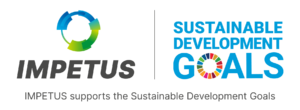
Issues
Flooding
- High precipitation, snow melts and the region’s hydrotechnical infrastructure all contribute to high flooding risks.
- Flood waters here typically rise fast and high, threatening society, settlements and infrastructure.

Biodiversity loss
- Croplands have increased at the expense of meadows and pastures.
- Large fields (>30 hectares) of arable crops exacerbate the issue.
Test solutions
Early warning system for precise flooding prediction


An early warning system is currently operating in Jelgava City, but requires a high degree of human operational intervention.
Our approach:
- Expand the early warning system to include Artificial Intelligence driven algorithms connected with the national monitoring system and other databases.;
- Make the upgraded data sets accessible as open data to experts and society.
This work is linked with:
- Zemgale Regional Development Program 2021-2027
- National Development Plan of Latvia 2021-2027
Economic impact assessment of physical climate risk

Socio-Economic tools and risk projections enable the assessment of climate risks and the establishment of projections and metrics regarding future investments.
Our approach:
- Identify highly vulnerable hot-spots using open datasets for Copernicus services and satellite-derived variables;
- Transform this knowledge into a specific regional model and include this in the Resilience Knowledge Booster;
- Use the RKB and regional model to elaborate economic assessment metrics to aid decision making about investments and future mitigation plans.
This work is linked with:
- European Investment Bank
- European Central Bank



